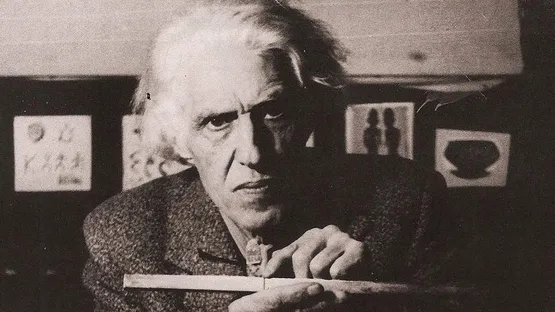
Joaquin Torres-Garcia / Joaquín Torres-García
Uruguayan artist Joaquín Torres-Garcia was a key figure in the development of Constructivism in Latin America. By combining elements of both Constructivism and Cubism, he was able to create a unique abstract style, which he called Universal Constructivism. He left behind paintings, sculptures, and writing that have influenced generations of artists. Today, the artist's works are held in numerous private and public collections, including the National Gallery of Art in Washington, D.C., the Bilbao Fine Arts Museum, the Museu Nacional d'Art de Catalunya in Barcelona, the Art Institute of Chicago, the Reina Sofia Museum in Madrid and Patricia Phelps de Cisneros collection, to name a few.
Art and Influences
Joaquín Torres-Garcia (born in 1949 in Montevideo) showed interest in art from a young age. When 1891 his family moved to Spain, he enrolled in Barcelona's Academy of Fine Arts and the Saint Lluc Artists Circle. Young Joaquín flourished, surrounded by such artists as Pablo Picasso and Manolo Hugue, who were his classmates at the time. At the academy, he started contemplating alternatives to the rigid formal training at school. Styles such as Impressionism and Post-Impressionism and the works by Henri de Toulouse-Lautrec made quite an impression on him.
By 1918, he was making wooden toys that were quite a hit in Europe. After moving to Paris in 1926, he started experimenting with Constructivism. Together with Piet Mondrian, he founded the Cercle et Carré (Circle and Square) movement, which rejected the fashionable ideas of Surrealism. After a disagreement with a member of a group, he left and moved back to Uruguay.
Joaquín Torres-Garcia’s Constructivism
Soon after Torres-Garcia returned to Montevideo, he founded the Association of Constructivist Artists (Asociación de arte constructive) and introduced Uruguay to Constructivism, Cubism, and Neoplasticism. He sought to create a visual language that reflected the cultural identity of Latin America while maintaining a modernist aesthetic. One of the most iconic works from this period is Mapa Invertido (1943), where Torres García reimagines the map of South America by placing Uruguay at the top, challenging the traditional Eurocentric view of geography. Through this symbolic gesture, he asserts the importance of embracing one's own cultural heritage while engaging with global artistic trends. In the work entitled Arte Constructivo from 1943, the artist employs a grid-like structure composed of geometric shapes and symbols. This painting reflects his belief in the universal language of art, transcending cultural and geographical boundaries.
Exhibitions
Joaquín Torres-Garcia, who passed away in 1949, has inspired generations of young artists. Still to this day his work is shown in solo and group exhibitions around the world, such as In Dialogue: Power Couple: Pierre and Louise Daura in Paris (2023) at Georgia Museum of Art, University of Georgia, Third Eye: The Costantini Collection in Malba (2022) at Fundación Malba in Buenos Aires, and Drawings From The South Of America: Master Drawings (2023) at Henrique Faria, New York.
Featured image: Joaquin Torres-Garcia - portrait, photo via barcelonagalleryweekend.com. Copyright of the artist
Can We Help?
Have a question or a technical issue? Want to learn more about our services to art dealers? Let us know and you'll hear from us within the next 24 hours.
